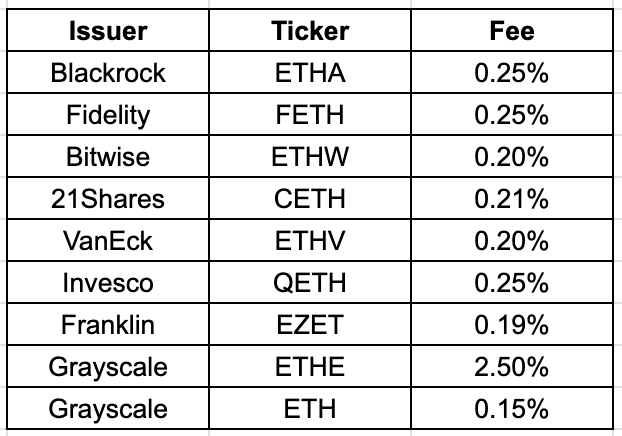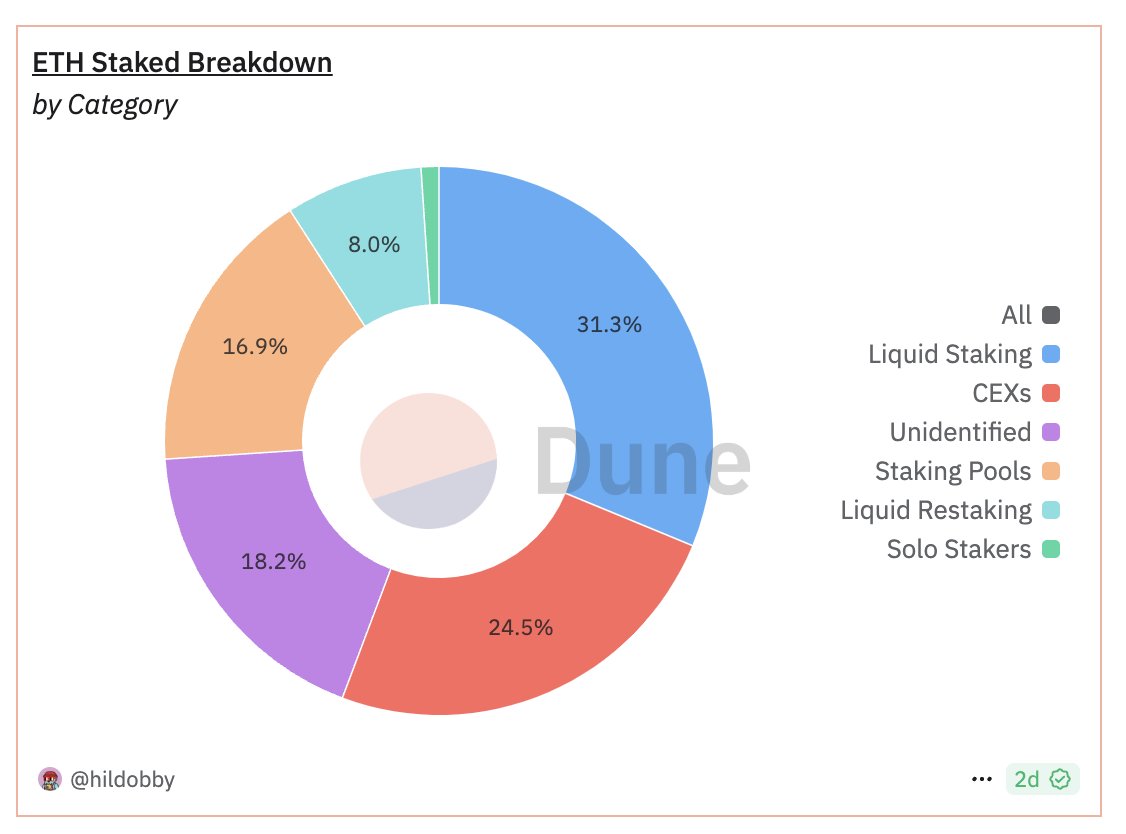BlackRock just filed to add Staking in their Ethereum ETF
Another fuel for the continuous inflow for ETH Spot ETFs
Ethereum ETFs with Staking: What Could it Mean for Investors and the Network?
1. 0% Management Fee
The staking yield on Ethereum is around ~3.2%. Assuming a conservative scenario where issuers stake only 25% of total assets and incur a 20% operating cost (for the staking provider, custodian, issuer, etc.), the staking yield could cover the management fee of ETH ETFs (excluding ETHE).
We’re already seeing examples in Europe, like @CoinSharesCo’s ETHE with a 0% management fee + 1.25% staking reward, and @BitwiseInvest’s ET32 with a 0% management fee and 3.1% staking reward. Other issuers, such as @vaneck_us's VETH and @21Shares's AETH, do charge a management fee, but their staking yield is still sufficient to offset this cost.
2. ETH ETFs Staking can add 550k-1.3M ETH being staked (Staked Ratio +1% to ~30%)
Issuers like 21Shares, Bitwise, and VanEck have a strong track record in staking. They already possess the infrastructure, service providers, and expertise needed to support staking, making it likely they’ll be among the first to file for staking-enabled ETFs. For firms with lower AUM, adding staking could be a valuable differentiator to capture market share.
Given the liquidity risks and the current ~10-day withdrawal and exit queue for staking, issuers may initially use a lower staking rate, around 20-50%. This approach could benefit lower-AUM issuers, allowing them to be more aggressive with higher staking yields to attract investors.
Notably, the withdrawal queue is expected to decrease after Ethereum’s Pectra upgrade (EIP7251), which could make staking even more appealing for ETFs/ETPs. Key benefits include:
1. Higher effective balance (32 -> 2048): This would reduce staking costs by decreasing the number of validators required.
2. Lower initial slashing penalties: Reducing risk for stakers.
3. Shorter exit queue: Validators can merge together, resulting in a lower number of validators in the queue for partial withdrawal
European Products Utilization Rate:
VETH: ~70%
ET32: ~95%
3. Staking Landscape would slowly shift to Staking Pools and CEXs
While liquid staking is an ideal solution for ETH stakers to maintain liquidity while earning rewards, the first wave of staking providers for ETFs will likely be institutional staking pools and centralized exchanges (CEXs).
- Staking Pools: @Kiln_finance, @P2Pvalidator, @Figment_io, @BlockdaemonHQ
- CEXs: @coinbase (possibly @krakenfx as well)
In the future, I hope to see @LidoFinance’s stETH included in an ETF/ETP. stETH offers clear advantages:
1. Maturity: Lido is the largest staking provider, holding a 27.7% market share on Ethereum.
2. Liquidity:
- Primary Market: ETFs/ETPs using stETH could benefit from Lido’s buffer mechanism, enabling faster withdrawals compared to other staking providers.
- Secondary Market: stETH can be swapped for ETH on DEXs/CEXs, providing instant liquidity.
- DeFi: stETH can also be used as collateral, allowing ETFs/ETPs to borrow ETH to fulfill redemption requests.
With these options for ETH liquidity, stETH could be a “holy grail” for ETH ETFs/ETPs, potentially enabling close to 100% utilization rates. However, regulatory concerns remain a challenge. Still, I’m optimistic about the future of liquid staking and have high hopes for the new Lido Institutional team.
4. Time for ETH ETFs to Live Up to Their Full Potential
ETH ETFs are currently only 10% the size of BTC ETFs, even though ETH’s market cap is 23% of BTC’s. One key factor holding ETH ETFs back from reaching their potential is the absence of staking.
For institutional investors, who are likely new to crypto, Bitcoin is already a novel asset—Ethereum is even newer. To attract inflows, ETH ETFs need a clear differentiator that’s easy for investors to understand.
Enabling staking yield could be a game changer. Even if the yield starts low, if issuers offer a 0% management fee plus ~1% yield, it would present a competitive alternative to BTC ETFs. Some may argue that institutional investors don’t care about an additional 1% yield, given its modest impact, but for others, even a small yield could be a meaningful differentiator.



17.64K
12
The content on this page is provided by third parties. Unless otherwise stated, OKX is not the author of the cited article(s) and does not claim any copyright in the materials. The content is provided for informational purposes only and does not represent the views of OKX. It is not intended to be an endorsement of any kind and should not be considered investment advice or a solicitation to buy or sell digital assets. To the extent generative AI is utilized to provide summaries or other information, such AI generated content may be inaccurate or inconsistent. Please read the linked article for more details and information. OKX is not responsible for content hosted on third party sites. Digital asset holdings, including stablecoins and NFTs, involve a high degree of risk and can fluctuate greatly. You should carefully consider whether trading or holding digital assets is suitable for you in light of your financial condition.

